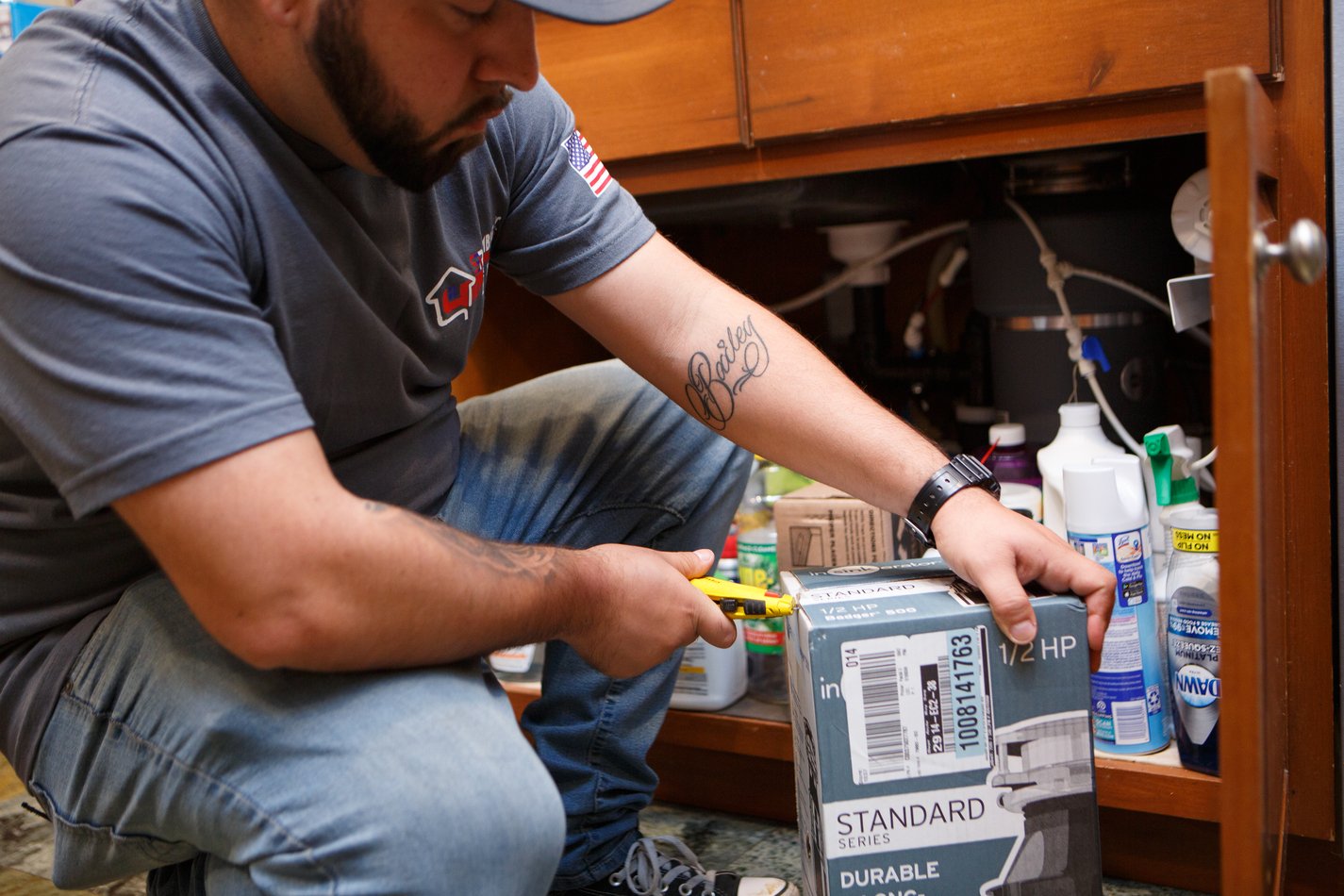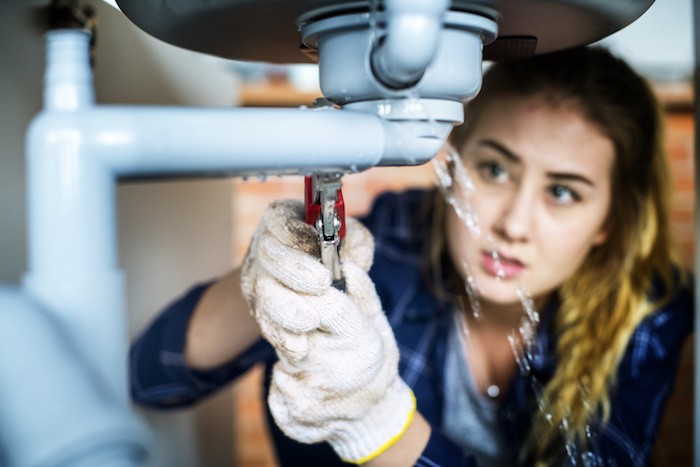When to Handle Plumbing Problems Solo vs. When You Should Hire a Qualified Plumber
When to Handle Plumbing Problems Solo vs. When You Should Hire a Qualified Plumber
Blog Article
Are you trying to locate resources on When to Call a Plumber? DIY or Professional Help?

Introduction
Plumbing issues can vary from small aggravations to significant headaches, often motivating homeowners to choose between taking on the trouble themselves or employing an expert plumbing professional. Knowing when to DIY and when to look for expert assistance can save time, money, and prevent possible catastrophes. This post checks out the factors to take into consideration when making this vital decision.
Advantages of Do It Yourself Plumbing
Tackling plumbing tasks on your own can be gratifying in numerous ways, especially for easier tasks.
Cost Cost savings
Do it yourself pipes projects typically conserve cash by preventing specialist service charge. Jobs like fixing minor leaks, replacing faucets, or installing brand-new showerheads are instances where home owners can handle repair work without hiring a plumbing technician.
Ability Enhancement
Engaging in DIY plumbing provides an opportunity to learn and boost functional skills. Basic jobs encourage house owners to comprehend their pipes systems far better and obtain self-confidence in handling small repairs separately.
Dangers of Do It Yourself Plumbing
While DIY tasks use benefits, particular risks need to be meticulously thought about prior to trying repairs.
Complexity of Jobs
Some plumbing problems call for specialized knowledge and tools past common property owner abilities. Messing up intricate problems can result in additional damage and costly repair services.
Safety Worries
Collaborating with pipes systems involves threats such as exposure to water damages, possibility for electric threats, and taking care of devices improperly. Security safety measures must be observed to prevent accidents and make certain efficient repair work.
Indicators to Call a Professional Plumbing
Acknowledging when a plumbing problem exceeds DIY abilities is essential to avoid intensifying troubles.
Indications of Complex Problems
Examples include:
Trigger expert treatment is required to resolve these issues efficiently and decrease damages.
DIY Plumbing Tips
For successful DIY plumbing, it's important to be prepared with the right tools and comply with appropriate procedures.
Fundamental Tools and Materials
Secret tools for DIY pipes:
Step-by-Step Guides
Clear instructions ensure secure and effective DIY repair services:
Choosing the Correct Time to DIY
Identifying when to take on plumbing jobs yourself calls for examining both the intricacy of the problem and individual comfort levels.
Analysis List
Consider:
When to Most Definitely Call a Specialist
Particular scenarios require prompt experienced focus to stop considerable damages or safety risks.
Examples consist of:
Finding and Working With an Expert Plumbing
Selecting a qualified plumber makes sure trustworthy solution and comfort in fixing plumbing issues.
Requirements for Option
Elements to take into consideration:
Price Analysis: DIY vs. Professional Solutions
Contrasting the economic effects of DIY efforts versus professional plumbing services aids in making educated choices.
Financial Considerations
Review:
Verdict
Determining whether to do it yourself or call an expert plumbing technician depends upon understanding the complexity of plumbing problems and personal capacities. By evaluating the advantages and dangers, property owners can make enlightened options that advertise efficient upkeep and protect their homes from pipes catastrophes.
When to DIY and when to call a professional plumber
There are Australian laws and regulations that regulate plumbing work in Australia. This means that there are few home plumbing tasks that you can DIY. Besides, a lot can go wrong with DIY plumbing projects. However, there are also plumbing works that you can successfully DIY. Read on to know when to DIY and when to call a professional plumber.
You can learn more about the risks of DIY plumbing projects, projects requiring special caution, and illegal DIY plumbing works to avoid. This post concludes with the services of commercial plumbers and why getting expert help is essential.
Reasons to Attempt DIY Plumbing Projects
While it is often not advisable to perform DIY plumbing repairs, several pros of DIY plumbing projects can make them attractive.
Save costs
A significant reason for doing DIY plumbing jobs is to save costs. It is possible to save on labour charges and overall fees if you buy the needed tools and parts from local hardware stores and do the repairs yourself.
Gaining experience
You can gain some hands-on experience in basic plumbing repair if you watch online videos and attempt the repairs yourself.
Confidence boosting
You can boost your confidence and self-reliance skills by performing DIY plumbing repairs and installations yourself.
Risks of DIY Plumbing Projects
If something goes wrong with your DIY plumbing project, you may have unfavourable results that you may consider the cons of DIY plumbing.
For one, your home may get so extensively water-damaged that your home and contents insurance will not cover you. You will also have to spend more money to repair the water or sewage problem than you would otherwise spend for professional plumbing jobs. Besides, you may often spend more time on DIY plumbing work than an experienced plumber would spend. This is because you may not have the needed skill set. There are also related safety hazards and potential threats of DIY plumbing jobs that you may need to consider. Plumbing Issues You Can Fix Yourself
You can attempt DIY plumbing for plumbing issues such as replacing tap washers, installing shower heads or performing minor tap leak repairs. However, it would help if you invited licensed plumbers to fix complex leaking showers, effectively deal with blocked drains, or repair hot water systems. This is the best way to ensure these plumbing issues are correctly fixed, and the project is insured.
Fixing clogged or blocked drains
You may have clogged drains or need help with slow-draining showers. These are tasks that you can resolve yourself using several options. To fix blocked drains, you may use baking soda, plungers, or wire hangers. Meanwhile, you can take the preventive measure of installing filtration systems such as drain filters to help prevent drain clogs.
New faucet installations
It is possible to install a new faucet yourself. You would have to turn off the hot and cold water valves. Then, you can remove and fix the old faucet and replace it with the new one.
Leaky faucet repairs
While leaky faucet repairs are more technical than installations, you can also take some steps to fix them. Turning off water valves is the first step in draining water from plumbing systems. Next, you can use a washcloth to cover the drain and remove the decorative handles.
This will allow enough room to unscrew the nuts that attach the faucet handle to the stem. Your final step is to take out and replace the old washers and O-rings with the new duplicates.
Fixing running toilets
An occasional DIY solution for running toilets is to restore the flapper in the tank to its proper place.
Burst pipes
You may have issues with your exterior plumbing fixtures. It may simply be that your inbound or outbound pipes have worn out, or you may have burst pipes due to flooding or large tree roots.
You may also have frozen pipes. These are all instances when you need to call a professional plumber. They will perform pipe inspections to locate the problem and implement solutions such as pipe relining.
Interior plumbing repairs
It's usually time to call a competent plumber if you want to do plumbing repair work on floors, ceilings, or the walls of your building. They can also help you fix faulty showers and sinks.
Plumbing renovation
Major renovation projects or plumbing jobs such as bathroom remodelling and bathroom renovations require the services of a professional plumber. Likewise, you need a professional plumber to fix your kitchen sink or plumbing. They can help you get the required plumbing permits. At the same time, they know what building codes apply to such renovation projects.

As a serious reader on When to call a professional plumber vs. DIY, I was thinking sharing that excerpt was worth the trouble. Are you aware of somebody else who is excited about the subject? Please feel free to share it. Thank-you for taking the time to read it.
Information Report this page